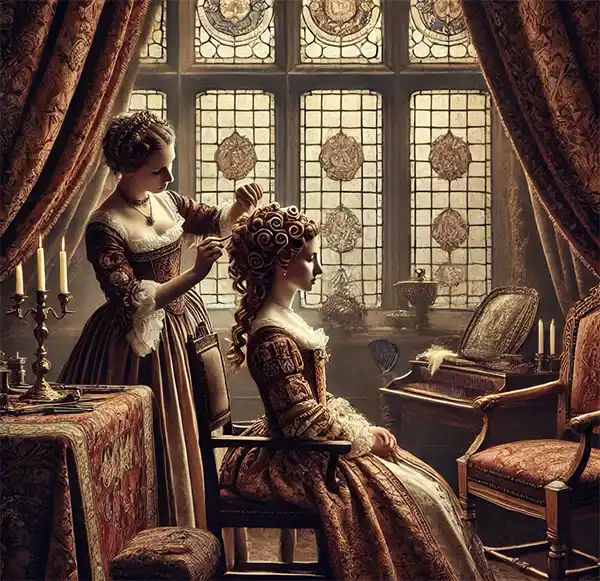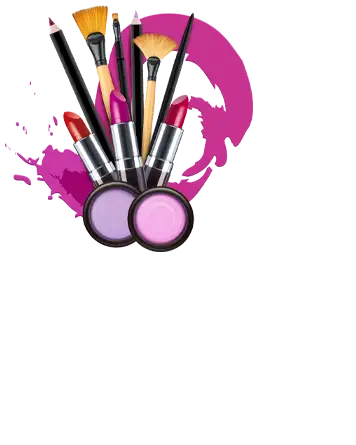Let’s dive into the fabulously glamorous world of National Beauticians Day, celebrated on June 26th. This day is all about celebrating the incredible artists who wield scissors, brushes, and a little bit of magic to transform us into the best versions of ourselves. Beauticians do far more than just cut hair or apply makeup—they’re confidence creators, problem solvers, and often, unofficial therapists. Today, we give them their well-deserved moment in the spotlight.
 A Glamorous History
A Glamorous History
The history of beauticians is a fascinating journey through time, reflecting the ever-changing standards of beauty and the innovative individuals who’ve shaped them. Long before hair dryers hummed and makeup brushes swirled in modern salons, beauty practices were deeply entwined with cultural traditions, status, and even survival.
In ancient Rome, for instance, wealthy women employed dedicated beauticians to style their hair in elaborate braids and curls, often incorporating wigs to achieve more dramatic looks. These styles were painstakingly crafted, sometimes requiring hours to perfect, showcasing beauty as a marker of both wealth and patience. Roman beauticians also dabbled in cosmetics, using crushed minerals and plant extracts to create pigments for eyes, cheeks, and lips. The work wasn’t just technical—it was an art form steeped in the cultural values of the time.
During the Renaissance, beauty took a turn toward extravagance. Pale skin became the ultimate status symbol, as it suggested a life of leisure away from the sun. To achieve this look, beauticians used everything from powdered lead (a choice we now cringe at) to natural remedies like crushed almonds and egg whites. Hair also became a focal point, with towering styles often adorned with pearls and jewels. Beauticians were more than stylists—they were engineers of fashion.
The Industrial Revolution in the 19th century brought significant changes, including advancements in tools and techniques. The invention of curling tongs, heated rollers, and even early versions of hair dryers transformed what beauticians could achieve. This period also saw the rise of commercial beauty products, such as pomades and powders, making beauty routines more accessible. Salons began popping up in cities, offering a space for women to experiment with the latest trends under the expert guidance of skilled beauticians.
By the early 20th century, beauty became an industry. Innovators like Madame C.J. Walker and Elizabeth Arden revolutionized the field, creating products and techniques that democratized beauty and brought it to the masses. Walker, the first self-made African American millionaire, developed haircare products tailored to Black women, while Arden’s salons introduced the concept of "total beauty," combining skincare, makeup, and personal styling.
World War II ushered in a new era of beauty as women joined the workforce and sought practical yet stylish solutions. Beauticians adapted by creating looks that were both functional and fashionable—victory rolls, anyone? This adaptability cemented their place as essential contributors to society, balancing utility with elegance.
Today’s beauticians continue to build on this rich history, blending ancient traditions with cutting-edge technology. From 3D-printed nails to personalized skincare powered by artificial intelligence, the profession has come a long way. Yet, at its core, the mission remains the same: to help people feel their most confident and radiant selves.
 So while the tools and trends may change, the legacy of beauticians as creators, innovators, and champions of individuality endures—one style at a time.
So while the tools and trends may change, the legacy of beauticians as creators, innovators, and champions of individuality endures—one style at a time.
The Magic of Beauticians
What makes a beautician truly special isn’t just their technical expertise—it’s their ability to make us feel like a million bucks. They tackle everything from bad haircuts to botched DIY dye jobs with a calm confidence that borders on heroic. A beautician doesn’t just give you a haircut; they give you hope. They don’t just apply makeup; they help you see the version of yourself that’s ready to take on the world. And all the while, they’re doing it with the patience of a saint and the precision of a brain surgeon.
The life of a beautician isn’t all glamour, though. Behind the chair, they’re juggling a whirlwind of appointments, remembering countless preferences (“just a trim, but keep it long enough to tuck behind my ears”), and mixing up hair color like a chemist creating a potion. Add in a healthy dose of listening to life stories and offering advice, and you’ve got someone who’s as much a therapist as they are a stylist.
Behind the Scenes and On the Screen
Beauticians have always been a cornerstone of the beauty world, but their influence extends far beyond the salon. On-screen, they’ve become cultural icons, representing everything from community leaders to quirky geniuses. Think about Truvy from Steel Magnolias, played by Dolly Parton. She wasn’t just a beautician—she was the heart of her small-town community, dispensing advice, laughter, and perfectly coiffed hair in equal measure. Truvy’s salon wasn’t just a place for makeovers; it was a hub of friendship and resilience.
Then there’s Edward Scissorhands, Tim Burton’s lovable and misunderstood creation. With an arsenal of blades for hands, Edward brought a whole new meaning to precision cuts—transforming not just hairstyles but entire hedges into works of art. While his journey is a little less typical, Edward captured the transformative power of a stylist to bring creativity and joy to people’s lives.
But these portrayals only scratch the surface of what beauticians bring to our world. Beyond Hollywood, beauticians have been quietly influencing our everyday lives. They’re often the first people we turn to when we need a boost—whether it’s a haircut before a big interview, a fresh manicure for a wedding, or a new look after a breakup. They’re the ones who know how to make us feel seen, confident, and ready to take on whatever life throws our way.
Even when they’re not working their magic in a salon, beauticians often have a profound impact. Many volunteer their time to provide haircuts for those in need, like individuals experiencing homelessness or people preparing for job interviews after hard times. They don’t just change appearances—they change lives.
So, the next time you’re in the chair, remember that the person behind you isn’t just trimming split ends or perfecting your eyeliner. They’re part of a long tradition of creativity, care, and community-building that has shaped cultures and brought people together for generations. And let’s face it—no blockbuster or feel-good story would be complete without them.
How to Celebrate National Beauticians Day
If you’re lucky enough to have a great beautician in your life, today’s the day to show your appreciation. Book an appointment, not because you need it, but because they deserve your support. Leave a tip that reflects the joy they bring to your life—because the perfect haircut is priceless, but generosity goes a long way. Even a heartfelt thank-you card or a kind review can make their day.
So take a moment to recognize these unsung heroes who transform not just our looks but our moods. They do more than cut, color, and style—they give us confidence to face the world, one fabulous look at a time.
Now, if you’ll excuse me, I think it’s time to book a trim. Or maybe a whole new look. After all, when better to celebrate your beautician than today?
Please Share our Content






 A Glamorous History
A Glamorous History So while the tools and trends may change, the legacy of beauticians as creators, innovators, and champions of individuality endures—one style at a time.
So while the tools and trends may change, the legacy of beauticians as creators, innovators, and champions of individuality endures—one style at a time.








 "Sláinte!" is a traditional Irish expression used as a toast, equivalent to "Cheers!" in English.
"Sláinte!" is a traditional Irish expression used as a toast, equivalent to "Cheers!" in English.